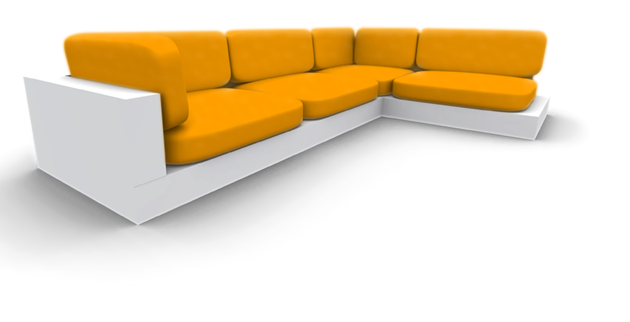| Autor |
Beitrag |
Darkpara
       
Beiträge: 61
Win XP
|
Verfasst: Fr 13.10.06 13:23
hallo zusammen,
ich habe mir ma eine prozedur geschrieben die mir eine sorte von pixeln raussucht zur weiterverarbeitung, nur ist das problem das das ganze im mom sehr langsam ist  hätte wer einen kleinen tip das ganze schneller zu gestalten?
1:
2:
3:
4:
5:
6:
7:
8:
9:
10:
11:
12:
13:
14:
15:
16:
17:
18:
19:
20:
21:
22:
23:
24:
25:
26:
27:
28:
29:
30:
31:
32:
33:
34:
35:
36:
37:
38:
39:
40:
41:
42:
43:
44:
45:
46:
47:
48:
49:
50:
51:
52:
53:
54:
| var
H1, S1, L1 :double;
RGB1 : TColor;
matrix :array[0..640] of array[0..480] of array[1..5] of double;
procedure TForm1.RBG_to_HLSClick(Sender: TObject);
type
TRGBColor = record
R,
G,
B: byte;
end;
var
pData: ^TRGBColor;
x,y:integer;
begin
FBitmap.PixelFormat:= pf24Bit;
for y:= 0 to FBitmap.Height-1 do begin
pData := Fbitmap.ScanLine[y];
for x:= 0 to FBitmap.Width-1 do begin
RGB1:=(pData^.R)*256*256+(pData^.G)*256+(pData^.B);
RGBtoHSL (RGB1, H1, S1, L1);
matrix[x,y,1]:= H1 ;
matrix[x,y,2]:= S1 ;
matrix[x,y,3]:= L1 ;
inc(pData);
if (matrix[x,y,1] > strtofloat(Fparam.EC1HMin.Text)) and
(matrix[x,y,1] < strtofloat(Fparam.EC1HMax.Text)) and
(matrix[x,y,2] > strtofloat(Fparam.EC1SMin.Text)) and
(matrix[x,y,2] < strtofloat(Fparam.EC1SMax.Text)) and
(matrix[x,y,3] > strtofloat(Fparam.EC1LMin.Text)) and
(matrix[x,y,3] < strtofloat(Fparam.EC1LMax.Text))
then
matrix[x,y,4] := 1
else
matrix[x,y,4] := 0;
if (matrix[x,y,1] > strtofloat(Fparam.EC2HMin.Text)) and
(matrix[x,y,1] < strtofloat(Fparam.EC2HMax.Text)) and
(matrix[x,y,2] > strtofloat(Fparam.EC2SMin.Text)) and
(matrix[x,y,2] < strtofloat(Fparam.EC2SMax.Text)) and
(matrix[x,y,3] > strtofloat(Fparam.EC2LMin.Text)) and
(matrix[x,y,3] < strtofloat(Fparam.EC2LMax.Text))
then
matrix[x,y,5] := 1
else
matrix[x,y,5] := 0;
end;
end;
end; |
vl. gehe ich das ganze auch komplett falsch an desswegen ma mein ziel welches ich mit dem programm verfolge:
ich habe eine webcam und einen kleinen roboter den ich mit bluetooth ansteuere, die webcam soll an der decke hängen und mir die position des roboters sagen können. ich male einen blauen und einen grünen kreis auf den roboter(wenn man die 2 kreise verbindet krigt man eine linie die die richtung angibt, 2 farben damit man bestimmen kann wo vorn und wo hinten ist) zurück zum programm, also ich filtere die grünen farben raus überall wo eine grüne farbe ist kommt eine 1 in das matrix[x,y,4] sont eine 0 für blau das geliche in matrix[x,y,5] dann berechne ich die summe aller umliegenden pixel und weiss somit wo der mittelpunkt des grössten (hoffe das wird mein kreis sein) blauflecks sein wird
was schon recht gut läuft ist das RGBtoHSL aber wenns wen interesiert hier die funktion die ich mal auf dem net gefunden hatte
1:
2:
3:
4:
5:
6:
7:
8:
9:
10:
11:
12:
13:
14:
15:
16:
17:
18:
19:
20:
21:
22:
23:
24:
25:
26:
27:
28:
29:
30:
31:
32:
33:
34:
35:
36:
37:
38:
39:
40:
41:
42:
43:
44:
45:
46:
47:
48:
49:
50:
51:
52:
53:
54:
55:
56:
57:
58:
59:
60:
61:
62:
63:
64:
65:
66:
67:
68:
69:
70:
71:
| procedure TForm1.RGBtoHSL (RGB: TColor; var H, S, L : double);
function Max (a, b : double): double;
begin
if a > b then
Result := a
else
Result := b
end;
function Min (a, b : double): double;
begin
if a < b then
Result := a
else
Result := b
end;
var
R,
G,
B,
D,
Cmax,
Cmin: double;
begin
R := GetRValue (RGB) / 255;
G := GetGValue (RGB) / 255;
B := GetBValue (RGB) / 255;
Cmax := Max (R, Max (G, B));
Cmin := Min (R, Min (G, B));
L := (Cmax + Cmin) / 2;
if Cmax = Cmin then begin
H := 0; S := 0
end else begin
D := Cmax - Cmin;
if L < 0.5 then
S := D / (Cmax + Cmin)
else
S := D / (2 - Cmax - Cmin);
if R = Cmax then
H := (G - B) / D
else
if G = Cmax then
H := 2 + (B - R) /D
else
H := 4 + (R - G) / D;
H := H / 6;
if H < 0 then
H := H + 1
end
end; |
EDIT:
was ich noch sagen kann: der teil der am meisten zeit inanspruch nimmt (1-2sekunden was inakzeptabel ist) sind die 2 if's, ohne die geht es sehr rasch also weniger als 200ms was schon eher akzeptabel is 
  Delphi-Quelltext Delphi-Quelltext
1:
2:
3:
4:
5:
6:
7:
8:
9:
10:
11:
12:
13:
14:
15:
16:
17:
18:
19:
20:
21:
| if (matrix[x,y,1] > strtofloat(Fparam.EC1HMin.Text)) and
(matrix[x,y,1] < strtofloat(Fparam.EC1HMax.Text)) and
(matrix[x,y,2] > strtofloat(Fparam.EC1SMin.Text)) and
(matrix[x,y,2] < strtofloat(Fparam.EC1SMax.Text)) and
(matrix[x,y,3] > strtofloat(Fparam.EC1LMin.Text)) and
(matrix[x,y,3] < strtofloat(Fparam.EC1LMax.Text))
then
matrix[x,y,4] := 1
else
matrix[x,y,4] := 0;
if (matrix[x,y,1] > strtofloat(Fparam.EC2HMin.Text)) and
(matrix[x,y,1] < strtofloat(Fparam.EC2HMax.Text)) and
(matrix[x,y,2] > strtofloat(Fparam.EC2SMin.Text)) and
(matrix[x,y,2] < strtofloat(Fparam.EC2SMax.Text)) and
(matrix[x,y,3] > strtofloat(Fparam.EC2LMin.Text)) and
(matrix[x,y,3] < strtofloat(Fparam.EC2LMax.Text))
then
matrix[x,y,5] := 1
else
matrix[x,y,5] := 0; |
|
|
Chryzler
       
Beiträge: 1097
Erhaltene Danke: 2
|
Verfasst: So 15.10.06 19:28
Versuch es mal so, ich weiß nicht ob es wirklich schneller wird, musst du ausprobieren.
1:
2:
3:
4:
5:
6:
7:
8:
9:
10:
11:
12:
13:
14:
15:
16:
17:
18:
19:
20:
21:
22:
23:
24:
25:
26:
27:
28:
29:
30:
31:
32:
33:
34:
35:
36:
37:
38:
39:
40:
41:
42:
43:
44:
45:
46:
47:
48:
49:
50:
51:
52:
53:
54:
55:
56:
57:
58:
59:
60:
61:
| var
H1, S1, L1: Single;
RGB1: TColor;
matrix: array[0..640] of array[0..480] of array[1..5] of Single;
procedure TForm1.RBG_to_HLSClick(Sender: TObject);
type
TRGBColor = record
R, G, B: Byte;
end;
var
pData: ^TRGBColor;
x, y : Integer;
EC1HMin, EC1HMax, EC1SMin, EC1SMax, EC1LMin, EC1LMax,
EC2HMin, EC2HMax, EC2SMin, EC2SMax, EC2LMin, EC2LMax: Single;
begin
ECI1HMin := StrToFloat(FParam.EC1HMin.Text);
ECI1HMax := StrToFloat(FParam.EC1HMax.Text);
ECI1SMin := StrToFloat(FParam.EC1SMin.Text);
ECI1SMax := StrToFloat(FParam.EC1SMax.Text);
ECI1LMin := StrToFloat(FParam.EC1LMin.Text);
ECI1LMax := StrToFloat(FParam.EC1LMax.Text);
ECI2HMin := StrToFloat(FParam.EC2HMin.Text);
ECI2HMax := StrToFloat(FParam.EC2HMax.Text);
ECI2SMin := StrToFloat(FParam.EC2SMin.Text);
ECI2SMax := StrToFloat(FParam.EC2SMax.Text);
ECI2LMin := StrToFloat(FParam.EC2LMin.Text);
ECI2LMax := StrToFloat(FParam.EC2LMax.Text);
FBitmap.PixelFormat := pf24Bit;
for y := 0 to FBitmap.Height - 1 do
begin
pData := FBitmap.ScanLine[y];
for x := 0 to FBitmap.Width - 1 do
begin
RGB1 := (pData^.R)*256*256 + (pData^.G)*256 + (pData^.B);
RGBtoHSL(RGB1, H1, S1, L1);
matrix[x, y, 1]:= H1;
matrix[x, y, 2]:= S1;
matrix[x, y, 3]:= L1;
inc(pData);
if (matrix[x, y, 1] > EC1HMin) and
(matrix[x, y, 1] < EC1HMax) and
(matrix[x, y, 2] > EC1SMin) and
(matrix[x, y, 2] < EC1SMax) and
(matrix[x, y, 3] > EC1LMin) and
(matrix[x, y, 3] < EC1LMax) then
matrix[x, y, 4] := 1
else
matrix[x, y, 4] := 0;
if (matrix[x, y, 1] > EC2HMin) and
(matrix[x, y, 1] < EC2HMax) and
(matrix[x, y, 2] > EC2SMin) and
(matrix[x, y, 2] < EC2SMax) and
(matrix[x, y, 3] > EC2LMin) and
(matrix[x, y, 3] < EC2LMax) then
matrix[x, y, 5] := 1
else
matrix[x, y, 5] := 0;
end;
end;
end; |
|
|
Allesquarks
       
Beiträge: 510
Win XP Prof
Delphi 7 E
|
Verfasst: So 15.10.06 23:28
Multiplikationen mit 2er Potenzen kann man auch mit shiftleft etc realisieren. Der Delphi Compiler optimiert das glaube ich nicht.
|
|
Darkpara 
       
Beiträge: 61
Win XP
|
Verfasst: So 15.10.06 23:41
danke für die antworten @Chryzler werd ich gelich ma ausprobiern
und wegen shiftleft, werd ich machen, wobei es wirklich der teil mit den 2 if abfragen is der die 1-2sekunden pro bild in anspruch nimmt 
|
|
Darkpara 
       
Beiträge: 61
Win XP
|
Verfasst: Mo 16.10.06 21:13
so, entlich zeit gehabt das ganze zu testen  diese lösung hat gut geklappt :
  Delphi-Quelltext Delphi-Quelltext
1:
2:
3:
4:
5:
6:
7:
8:
9:
10:
11:
12:
| ECI1HMin := StrToFloat(FParam.EC1HMin.Text);
ECI1HMax := StrToFloat(FParam.EC1HMax.Text);
ECI1SMin := StrToFloat(FParam.EC1SMin.Text);
ECI1SMax := StrToFloat(FParam.EC1SMax.Text);
ECI1LMin := StrToFloat(FParam.EC1LMin.Text);
ECI1LMax := StrToFloat(FParam.EC1LMax.Text);
ECI2HMin := StrToFloat(FParam.EC2HMin.Text);
ECI2HMax := StrToFloat(FParam.EC2HMax.Text);
ECI2SMin := StrToFloat(FParam.EC2SMin.Text);
ECI2SMax := StrToFloat(FParam.EC2SMax.Text);
ECI2LMin := StrToFloat(FParam.EC2LMin.Text);
ECI2LMax := StrToFloat(FParam.EC2LMax.Text); |
brauch nun noch etwa 200ms was ok ist danke euch 
|
|
GTA-Place
       

Beiträge: 5248
Erhaltene Danke: 2
WIN XP, IE 7, FF 2.0
Delphi 7, Lazarus
|
Verfasst: Mo 16.10.06 21:25
Hast du mal versucht zu shiften? Würd mich interessieren, wie sich das auswirkt.
_________________ "Wer Ego-Shooter Killerspiele nennt, muss konsequenterweise jeden Horrorstreifen als Killerfilm bezeichnen." (Zeit.de)
|
|
Phantom1
       
Beiträge: 390
|
Verfasst: Di 17.10.06 00:09
Die Farbtiefe auf 32bit erhöhen dürfte auch schneller sein, geht jedoch auf kosten des speichers.
mfg
|
|
Stefan.Buchholtz
       
Beiträge: 612
WIN 2000, WIN XP, Mac OS X
D7 Enterprise, XCode, Eclipse, Ruby On Rails
|
Verfasst: Di 17.10.06 10:01
Ich würde die RGBtoHSL-Funktion noch so ändern, dass sie die RGB-Werte einzeln übergeben bekommt. Im Moment baust du aus einem Pixel der Bitmap einen TColor-Wert zusammen, den RGBtoHSL wieder in die einzelnen Farbkomponenten zerlegt.
Die Funktionen Max und Min kannst du dir auch sparen, sie sind in der Unit Math enthalten.
1:
2:
3:
4:
5:
6:
7:
8:
9:
10:
11:
12:
13:
14:
15:
16:
17:
18:
19:
20:
21:
22:
23:
24:
25:
26:
27:
28:
29:
30:
31:
32:
33:
34:
35:
36:
37:
38:
39:
40:
41:
42:
43:
44:
45:
46:
47:
| procedure TForm1.RGBtoHSL (const red, green, blue: Byte; out H, S, L : Single);
var
R,
G,
B,
D,
Cmax,
Cmin: Single;
begin
R := red / 255;
G := green / 255;
B := blue / 255;
Cmax := Max (R, Max (G, B));
Cmin := Min (R, Min (G, B));
L := (Cmax + Cmin) / 2;
if Cmax = Cmin then begin
H := 0; S := 0
end
else
begin
D := Cmax - Cmin;
if L < 0.5 then
S := D / (Cmax + Cmin)
else
S := D / (2 - Cmax - Cmin);
if R = Cmax then
H := (G - B) / D
else
if G = Cmax then
H := 2 + (B - R) /D
else
H := 4 + (R - G) / D;
H := H / 6;
if H < 0 then
H := H + 1
end
end; |
Meiner Meinung nach kannst du bei Farbwerten auch überall mit Singles statt Doubles arbeiten, ein Farbkanal hat ja nur 8 Bit Genauigkeit - Doubles sind da unnötig. Ich bin aber nicht sicher, ob Delphi bei Singles auch tatsächlich schneller rechnet - das müsstest du wohl testen. _________________ Ein Computer ohne Windows ist wie eine Schokoladentorte ohne Senf.
|
|
Stefan.Buchholtz
       
Beiträge: 612
WIN 2000, WIN XP, Mac OS X
D7 Enterprise, XCode, Eclipse, Ruby On Rails
|
Verfasst: Di 17.10.06 10:17
Noch was: machst du mit den berechneten HSL-Werten nach der Schleife noch was oder wertest du dann nur noch matrix[x,y,4] und matrix[x,y,5] aus? Nach deiner Beschreibung des Algorithmus werden nach der Schleife die HSL-Werte nich mehr benötigt - du brauchst sie also nicht in deiner Matrix zu speichern, sondern kannst einfach mit lokalen Variablen arbeiten. Das bringt in mehrerer Hinsicht was: Zugriffe auf lokale Variablen sind schneller als auf Array-Elemente und du brauchst weniger Speicher - ein grösserer Teil von matrix passt in den Prozessor-Cache, was vergleichsweise langsame Speicherzugriffe vermeidet.
Stefan
_________________ Ein Computer ohne Windows ist wie eine Schokoladentorte ohne Senf.
|
|
Darkpara 
       
Beiträge: 61
Win XP
|
Verfasst: Di 17.10.06 10:56
hm, stimmt, werd ich dann bei der end version korigieren, ist manchma ganz praktisch zum nachschauen ob die werte wirklich stimmen 
|
|
Phantom1
       
Beiträge: 390
|
Verfasst: Di 17.10.06 16:11
Bei dem TRGBColor record solltest du aufpassen, die daten werden immer BGR und nicht RGB gespeichert.
Ich hab das mal korrigiert und noch ein paar Verbesserungen vorgenommen:
1:
2:
3:
4:
5:
6:
7:
8:
9:
10:
11:
12:
13:
14:
15:
16:
17:
18:
19:
20:
21:
22:
23:
24:
25:
26:
27:
28:
29:
30:
31:
32:
33:
34:
35:
36:
37:
38:
39:
40:
41:
42:
43:
44:
45:
46:
47:
48:
49:
| var
matrix: array[0..640, 0..480] of (cNone, cGreen, cBlue);
procedure TForm1.RBG_to_HLSClick(Sender: TObject);
type
TRGBColor = packed record
B, G, R, A: Byte;
end;
var
pData: ^TRGBColor;
H, S, L: Single;
x, y : Integer;
EC1HMin, EC1HMax, EC1SMin, EC1SMax, EC1LMin, EC1LMax,
EC2HMin, EC2HMax, EC2SMin, EC2SMax, EC2LMin, EC2LMax: Single;
begin
ECI1HMin := StrToFloat(FParam.EC1HMin.Text);
ECI1HMax := StrToFloat(FParam.EC1HMax.Text);
ECI1SMin := StrToFloat(FParam.EC1SMin.Text);
ECI1SMax := StrToFloat(FParam.EC1SMax.Text);
ECI1LMin := StrToFloat(FParam.EC1LMin.Text);
ECI1LMax := StrToFloat(FParam.EC1LMax.Text);
ECI2HMin := StrToFloat(FParam.EC2HMin.Text);
ECI2HMax := StrToFloat(FParam.EC2HMax.Text);
ECI2SMin := StrToFloat(FParam.EC2SMin.Text);
ECI2SMax := StrToFloat(FParam.EC2SMax.Text);
ECI2LMin := StrToFloat(FParam.EC2LMin.Text);
ECI2LMax := StrToFloat(FParam.EC2LMax.Text);
FBitmap.PixelFormat := pf32Bit;
for y := 0 to FBitmap.Height - 1 do
begin
pData := FBitmap.ScanLine[y];
for x := 0 to FBitmap.Width - 1 do
begin
RGBtoHSL(pData^.R, pData^.G, pData^.B, H, S, L);
if (H > EC1HMin) and (H < EC1HMax) and
(S > EC1SMin) and (S < EC1SMax) and
(L > EC1LMin) and (L < EC1LMax) then
matrix[x, y] := cGreen
else
if (H > EC2HMin) and (H < EC2HMax) and
(S > EC2SMin) and (S < EC2SMax) and
(L > EC2LMin) and (L < EC2LMax) then
matrix[x, y] := cBlue
else
matrix[x, y] := cNone;
inc(pData);
end;
end;
end; |
mfg
|
|
Horst_H
       
Beiträge: 1654
Erhaltene Danke: 244
WIN10,PuppyLinux
FreePascal,Lazarus
|
Verfasst: Di 17.10.06 18:31
Hallo,
nur so am Rande. Multiplizieren mit dem Kehrwert ist bei Konstanten einfach viel schneller.
Das sparte 25% also statt 2 nur 1,5 Sekunden fuer alle RGB to HSL.
(2^24=16,2?? Mio->10 Mio Umwandlungen in der Sekunde, dann betraegt der Anteil an Deiner Rechnung ~30ms spart also nur 10 ms )
Überraschenderweise machte sich der Übergang auf double sehr stark bemerkbar.Es war dann 40% langsamer.
1:
2:
3:
4:
5:
6:
7:
8:
9:
10:
11:
12:
13:
14:
15:
16:
17:
18:
19:
20:
21:
22:
23:
24:
25:
26:
27:
28:
29:
30:
31:
32:
33:
34:
35:
36:
37:
38:
39:
40:
41:
42:
43:
44:
45:
46:
47:
48:
49:
50:
51:
| const
rez255= 1/255;
rez6 = 1/6;
....
procedure TForm1.RGBtoHSL (const red, green, blue: Byte; out H, S, L : Single);
var
R,
G,
B,
D,
Cmax,
Cmin: Single;
begin
R := red * rez255;
G := green * rez255;
B := blue * rez255;
Cmax := Max (R, Max (G, B));
Cmin := Min (R, Min (G, B));
L := (Cmax + Cmin) * 0.5;
if Cmax = Cmin then begin
H := 0.0; S := 0.0
end
else
begin
D := Cmax - Cmin;
if L < 0.5 then
S := D / (Cmax + Cmin)
else
S := D / (2.0 - Cmax - Cmin);
if R = Cmax then
H := (G - B) / D
else
if G = Cmax then
H := 2.0 + (B - R) /D
else
H := 4.0 + (R - G) / D;
H := H * rez6;
if H < 0.0 then
H := H + 1.0
end
end; |
Gruss Horst
|
|
Allesquarks
       
Beiträge: 510
Win XP Prof
Delphi 7 E
|
Verfasst: Di 17.10.06 19:00
Falls es wirklich essentiell ist, dass es schneller wird, bietet sich in deinem Fall wohl auch SSE an!
Nebenbei weiß jetzt nicht, ob es schon gesagt wurde aber
  Delphi-Quelltext Delphi-Quelltext
1:
2:
3:
4:
5:
6:
7:
8:
9:
10:
| if (matrix[x,y,1] > strtofloat(Fparam.EC1HMin.Text)) and
(matrix[x,y,1] < strtofloat(Fparam.EC1HMax.Text)) and
(matrix[x,y,2] > strtofloat(Fparam.EC1SMin.Text)) and
(matrix[x,y,2] < strtofloat(Fparam.EC1SMax.Text)) and
(matrix[x,y,3] > strtofloat(Fparam.EC1LMin.Text)) and
(matrix[x,y,3] < strtofloat(Fparam.EC1LMax.Text))
then
matrix[x,y,4] := 1
else
matrix[x,y,4] := 0; |
müsste man auch direkt als Aussage schreiben können:
  Delphi-Quelltext Delphi-Quelltext
1:
2:
3:
4:
5:
6:
| matrix[x,y,4] := (matrix[x,y,1] > strtofloat(Fparam.EC1HMin.Text)) and
(matrix[x,y,1] < strtofloat(Fparam.EC1HMax.Text)) and
(matrix[x,y,2] > strtofloat(Fparam.EC1SMin.Text)) and
(matrix[x,y,2] < strtofloat(Fparam.EC1SMax.Text)) and
(matrix[x,y,3] > strtofloat(Fparam.EC1LMin.Text)) and
(matrix[x,y,3] < strtofloat(Fparam.EC1LMax.Text)) |
|
|
BenBE
       
Beiträge: 8721
Erhaltene Danke: 191
Win95, Win98SE, Win2K, WinXP
D1S, D3S, D4S, D5E, D6E, D7E, D9PE, D10E, D12P, DXEP, L0.9\FPC2.0
|
Verfasst: Mi 18.10.06 09:59
Hi,
 Allesquarks hat folgendes geschrieben: Allesquarks hat folgendes geschrieben: | Nebenbei weiß jetzt nicht, ob es schon gesagt wurde aber
  Delphi-Quelltext Delphi-Quelltext
1:
2:
3:
4:
5:
6:
7:
8:
9:
10:
| if (matrix[x,y,1] > strtofloat(Fparam.EC1HMin.Text)) and
(matrix[x,y,1] < strtofloat(Fparam.EC1HMax.Text)) and
(matrix[x,y,2] > strtofloat(Fparam.EC1SMin.Text)) and
(matrix[x,y,2] < strtofloat(Fparam.EC1SMax.Text)) and
(matrix[x,y,3] > strtofloat(Fparam.EC1LMin.Text)) and
(matrix[x,y,3] < strtofloat(Fparam.EC1LMax.Text))
then
matrix[x,y,4] := 1
else
matrix[x,y,4] := 0; |
müsste man auch direkt als Aussage schreiben können:
  Delphi-Quelltext Delphi-Quelltext
1:
2:
3:
4:
5:
6:
| matrix[x,y,4] := (matrix[x,y,1] > strtofloat(Fparam.EC1HMin.Text)) and
(matrix[x,y,1] < strtofloat(Fparam.EC1HMax.Text)) and
(matrix[x,y,2] > strtofloat(Fparam.EC1SMin.Text)) and
(matrix[x,y,2] < strtofloat(Fparam.EC1SMax.Text)) and
(matrix[x,y,3] > strtofloat(Fparam.EC1LMin.Text)) and
(matrix[x,y,3] < strtofloat(Fparam.EC1LMax.Text)) | |
Nicht ganz ...
  Delphi-Quelltext Delphi-Quelltext
1:
2:
3:
4:
5:
6:
| matrix[x,y,4] := Ord((matrix[x,y,1] > strtofloat(Fparam.EC1HMin.Text)) and
(matrix[x,y,1] < strtofloat(Fparam.EC1HMax.Text)) and
(matrix[x,y,2] > strtofloat(Fparam.EC1SMin.Text)) and
(matrix[x,y,2] < strtofloat(Fparam.EC1SMax.Text)) and
(matrix[x,y,3] > strtofloat(Fparam.EC1LMin.Text)) and
(matrix[x,y,3] < strtofloat(Fparam.EC1LMax.Text))); |
Ferner sollte man aber auch die StrToFloat aus der Schleife entfernen, da sich der Wert ja nicht mehr ändert ...
Wie das dann aussähe, wurde oben bereits gezeigt ...
  Delphi-Quelltext Delphi-Quelltext
1:
2:
3:
| matrix[x, y] := Ord((H > EC2HMin) and (H < EC2HMax) and
(S > EC2SMin) and (S < EC2SMax) and
(L > EC2LMin) and (L < EC2LMax)); |
Ansonsten schau mal in diesem Post etwas weiter oben ... _________________ Anyone who is capable of being elected president should on no account be allowed to do the job.
Ich code EdgeMonkey - In dubio pro Setting.
Zuletzt bearbeitet von BenBE am Do 19.10.06 21:44, insgesamt 1-mal bearbeitet
|
|
Darkpara 
       
Beiträge: 61
Win XP
|
Verfasst: Do 19.10.06 15:52
grml, da ist man paar tage ned im forum und hat scho unzählige sachen zu verbessern, ich meld mich sobald ich mit den obrigen vorschlägen durch bin danke euch  werde dann den aktualisierten code ma posten
|
|
|















































































































































